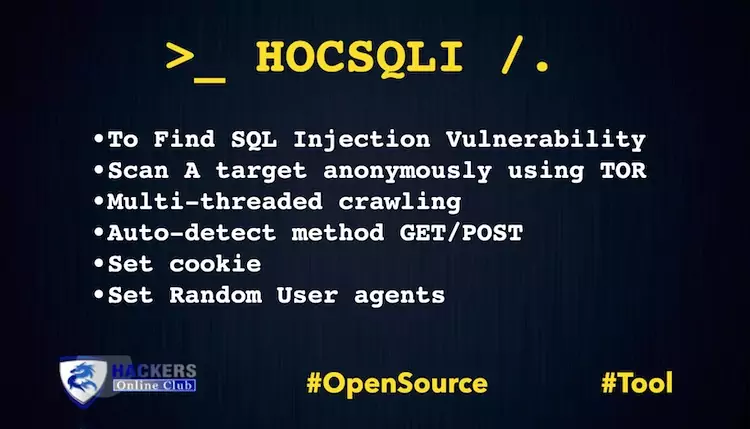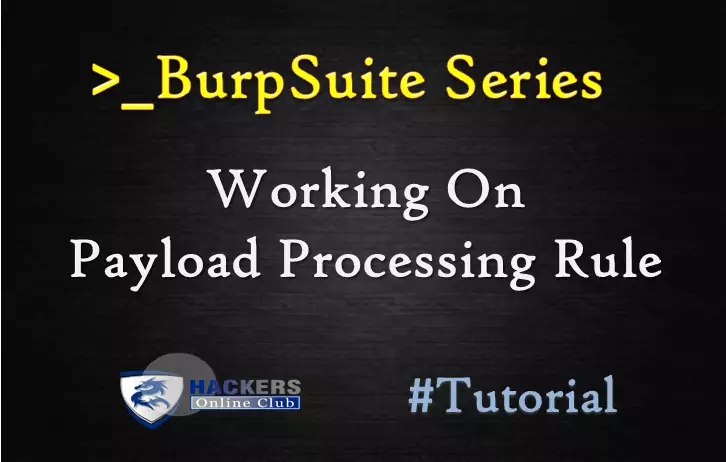NMAP is a free and open-source security scanner.
It is use to discover hosts and services on a computer network, thus building a “map” of the network. To accomplish its goal, Nmap sends specially crafted packets to the target host and then analyzes the responses.
NMAP Tutorial for Beginners – How To Use NMAP- A Valuable Open Source Network Security Scanner
NMAP Features
- Host discovery – Identifying hosts on a network. For example, listing the hosts that respond to TCP and/or ICMP requests or have a particular port open.
- Port scanning – Enumerating the open ports on target hosts.
- Version detection – Interrogating network services on remote devices to determine application name and version number.
- OS detection – Determining the operating system and hardware characteristics of network devices.
- Scriptable interaction with the target – using Nmap Scripting Engine (NSE) and Lua programming language.
- Nmap can provide further information on targets, including reverse DNS names, device types, and MAC addresses.
Typical uses of Nmap:
- Auditing the security of a device or firewall by identifying the network connections which can be made to, or through it.
- Identifying open ports on a target host in preparation for auditing.
- Network inventory, network mapping, maintenance and asset management.
- Auditing the security of a network by identifying new servers.
- Generating traffic to hosts on a network, response analysis and response time measurement.
- Finding and exploiting vulnerabilities in a network.
- DNS queries and subdomain search
Also See: The Complete Ethical Hacking Course
NMAP Commands Cheatsheet with Example.
Basic Scanning Commands
| Goal | Command | Example |
| Scan a Single Target | nmap [target] | nmap 192.168.0.1 |
| Scan Multiple Targets | nmap [target1, target2, etc] | nmap 192.168.0.1 192.168.0.2 |
| Scan a List of Targets | nmap -iL [list.txt] | nmap -iL targets.txt |
| Scan a Range of Hosts | nmap [range of ip addresses] | nmap 192.168.0.1-10 |
| Scan an Entire Subnet | nmap [ip address/cdir] | nmap 192.168.0.1/24 |
| Scan Random Hosts | nmap -iR [number] | nmap -iR 0 |
| Excluding Targets from a Scan | nmap [targets] –exclude [targets] | nmap 192.168.0.1/24 –exclude 192.168.0.100, 192.168.0.200 |
| Excluding Targets Using a List | nmap [targets] –excludefile [list.txt] | nmap 192.168.0.1/24 –excludefile notargets.txt |
| Perform an Aggressive Scan | nmap -A [target] | nmap -A 192.168.0.1 |
| Scan an IPv6 Target | nmap -6 [target] | nmap -6 1aff:3c21:47b1:0000:0000:0000:0000:2afe |
Also See- How to use PING command?
Discovery Options
| Goal | Command | Example |
| Perform a Ping Only Scan | nmap -sP [target] | nmap -sP 192.168.0.1 |
| Don’t Ping | nmap -PN [target] | nmap -PN 192.168.0.1 |
| TCP SYN Ping | nmap -PS [target] | nmap -PS 192.168.0.1 |
| TCP ACK Ping | nmap -PA [target] | nmap -PA 192.168.0.1 |
| UDP Ping | nmap -PU [target] | nmap -PU 192.168.0.1 |
| SCTP INIT Ping | nmap -PY [target] | nmap -PY 192.168.0.1 |
| ICMP Echo Ping | nmap -PE [target] | nmap -PE 192.168.0.1 |
| ICMP Timestamp Ping | nmap -PP [target] | nmap -PP 192.168.0.1 |
| ICMP Address Mask Ping | nmap -PM [target] | nmap -PM 192.168.0.1 |
| IP Protocol Ping | nmap -PO [target] | nmap -PO 192.168.0.1 |
| ARP Ping | nmap -PR [target] | nmap -PR 192.168.0.1 |
| Traceroute | nmap –traceroute [target] | nmap –traceroute 192.168.0.1 |
| Force Reverse DNS Resolution | nmap -R [target] | nmap -R 192.168.0.1 |
| Disable Reverse DNS Resolution | nmap -n [target] | nmap -n 192.168.0.1 |
| Alternative DNS Lookup | nmap –system-dns [target] | nmap –system-dns 192.168.0.1 |
| Manually Specify DNS Server(s) | nmap –dns-servers [servers] [target] | nmap –dns-servers 201.56.212.54 192.168.0.1 |
| Create a Host List | nmap -sL [targets] | nmap -sL 192.168.0.1/24 |
Advanced Scanning Options
| Goal | Command | Example |
| TCP SYN Scan | nmap -sS [target] | nmap -sS 192.168.0.1 |
| TCP Connect Scan | nmap -sT [target] | nmap -sT 192.168.0.1 |
| UDP Scan | nmap -sU [target] | nmap -sU 192.168.0.1 |
| TCP NULL Scan | nmap -sN [target] | nmap -sN 192.168.0.1 |
| TCP FIN Scan | nmap -sF [target] | nmap -sF 192.168.0.1 |
| Xmas Scan | nmap -sX [target] | nmap -sX 192.168.0.1 |
| TCP ACK Scan | nmap -sA [target] | nmap -sA 192.168.0.1 |
| Custom TCP Scan | nmap –scanflags [flags] [target] | nmap –scanflags SYNFIN 192.168.0.1 |
| IP Protocol Scan | nmap -sO [target] | nmap -sO 192.168.0.1 |
| Send Raw Ethernet Packets | nmap –send-eth [target] | nmap –send-eth 192.168.0.1 |
| Send IP Packets | nmap –send-ip [target] | nmap –send-ip 192.168.0.1 |
Port Scanning Options
| Goal | Command | Example |
| Perform a Fast Scan | nmap -F [target] | nmap -F 192.168.0.1 |
| Scan Specific Ports | nmap -p [port(s)] [target] | nmap -p 21-25,80,139,8080 192.168.1.1 |
| Scan Ports by Name | nmap -p [port name(s)] [target] | nmap -p ftp,http* 192.168.0.1 |
| Scan Ports by Protocol | nmap -sU -sT -p U:[ports],T:[ports] [target] | nmap -sU -sT -p U:53,111,137,T:21-25,80,139,8080 192.168.0.1 |
| Scan All Ports | nmap -p ‘*’ [target] | nmap -p ‘*’ 192.168.0.1 |
| Scan Top Ports | nmap –top-ports [number] [target] | nmap –top-ports 10 192.168.0.1 |
| Perform a Sequential Port Scan | nmap -r [target] | nmap -r 192.168.0.1 |
Version Detection
| Goal | Command | Example |
| Operating System Detection | nmap -O [target] | nmap -O 192.168.0.1 |
| Submit TCP/IP Fingerprints | www.nmap.org/submit/ | |
| Attempt to Guess an Unknown OS | nmap -O –osscan-guess [target] | nmap -O –osscan-guess 192.168.0.1 |
| Service Version Detection | nmap -sV [target] | nmap -sV 192.168.0.1 |
| Troubleshooting Version Scans | nmap -sV –version-trace [target] | nmap -sV –version-trace 192.168.0.1 |
| Perform a RPC Scan | nmap -sR [target] | nmap -sR 192.168.0.1 |
Timing Options
| Goal | Command | Example |
| Timing Templates | nmap -T[0-5] [target] | nmap -T3 192.168.0.1 |
| Set the Packet TTL | nmap –ttl [time] [target] | nmap –ttl 64 192.168.0.1 |
| Minimum # of Parallel Operations | nmap –min-parallelism [number] [target] | nmap –min-parallelism 10 192.168.0.1 |
| Maximum # of Parallel Operations | nmap –max-parallelism [number] [target] | nmap –max-parallelism 1 192.168.0.1 |
| Minimum Host Group Size | nmap –min-hostgroup [number] [targets] | nmap –min-hostgroup 50 192.168.0.1 |
| Maximum Host Group Size | nmap –max-hostgroup [number] [targets] | nmap –max-hostgroup 1 192.168.0.1 |
| Maximum RTT Timeout | nmap –initial-rtt-timeout [time] [target] | nmap –initial-rtt-timeout 100ms 192.168.0.1 |
| Initial RTT Timeout | nmap –max-rtt-timeout [TTL] [target] | nmap –max-rtt-timeout 100ms 192.168.0.1 |
| Maximum Retries | nmap –max-retries [number] [target] | nmap –max-retries 10 192.168.0.1 |
| Host Timeout | nmap –host-timeout [time] [target] | nmap –host-timeout 30m 192.168.0.1 |
| Minimum Scan Delay | nmap –scan-delay [time] [target] | nmap –scan-delay 1s 192.168.0.1 |
| Maximum Scan Delay | nmap –max-scan-delay [time] [target] | nmap –max-scan-delay 10s 192.168.0.1 |
| Minimum Packet Rate | nmap –min-rate [number] [target] | nmap –min-rate 50 192.168.0.1 |
| Maximum Packet Rate | nmap –max-rate [number] [target] | nmap –max-rate 100 192.168.0.1 |
| Defeat Reset Rate Limits | nmap –defeat-rst-ratelimit [target] | nmap –defeat-rst-ratelimit 192.168.0.1 |
Firewall Evasion Techniques
| Goal | Command | Example |
| Fragment Packets | nmap -f [target] | nmap -f 192.168.0.1 |
| Specify a Specific MTU | nmap –mtu [MTU] [target] | nmap –mtu 32 192.168.0.1 |
| Use a Decoy | nmap -D RND:[number] [target] | nmap -D RND:10 192.168.0.1 |
| Idle Zombie Scan | nmap -sI [zombie] [target] | nmap -sI 192.168.0.38 192.168.0.1 |
| Manually Specify a Source Port | nmap –source-port [port] [target] | nmap –source-port 1025 192.168.0.1 |
| Append Random Data | nmap –data-length [size] [target] | nmap –data-length 20 192.168.0.1 |
| Randomize Target Scan Order | nmap –randomize-hosts [target] | nmap –randomize-hosts 192.168.0.1-20 |
| Spoof MAC Address | nmap –spoof-mac [MAC|0|vendor] [target] | nmap –spoof-mac Cisco 192.168.0.1 |
| Send Bad Checksums | nmap –badsum [target] | nmap –badsum 192.168.0.1 |
Output options
| Goal | Command | Example |
| Save Output to a Text File | nmap -oN [scan.txt] [target] | nmap -oN scan.txt 192.168.0.1 |
| Save Output to a XML File | nmap -oX [scan.xml] [target] | nmap -oX scan.xml 192.168.0.1 |
| Grepable Output | nmap -oG [scan.txt] [targets] | nmap -oG scan.txt 192.168.0.1 |
| Output All Supported File Types | nmap -oA [path/filename] [target] | nmap -oA ./scan 192.168.0.1 |
| Periodically Display Statistics | nmap –stats-every [time] [target] | nmap –stats-every 10s 192.168.0.1 |
| 133t Output | nmap -oS [scan.txt] [target] | nmap -oS scan.txt 192.168.0.1 |
Troubleshooting And Debugging
| Goal | Command | Example |
| Getting Help | nmap -h | nmap -h |
| Display Nmap Version | nmap -V | nmap -V |
| Verbose Output | nmap -v [target] | nmap -v 192.168.0.1 |
| Debugging | nmap -d [target] | nmap -d 192.168.0.1 |
| Display Port State Reason | nmap –reason [target] | nmap –reason 192.168.0.1 |
| Only Display Open Ports | nmap –open [target] | nmap –open 192.168.0.1 |
| Trace Packets | nmap –packet-trace [target] | nmap –packet-trace 192.168.0.1 |
| Display Host Networking | nmap –iflist | nmap –iflist |
| Specify a Network Interface | nmap -e [interface] [target] | nmap -e eth0 192.168.0.1 |
NMAP Scripting Engine
| Goal | Command | Example |
| Execute Individual Scripts | nmap –script [script.nse] [target] | nmap –script banner.nse 192.168.0.1 |
| Execute Multiple Scripts | nmap –script [expression] [target] | nmap –script ‘http-*’ 192.168.0.1 |
| Script Categories | all, auth, default, discovery, external, intrusive, malware, safe, vuln | |
| Execute Scripts by Category | nmap –script [category] [target] | nmap –script ‘not intrusive’ 192.168.0.1 |
| Execute Multiple Script Categories | nmap –script [category1,category2,etc] | nmap –script ‘default or safe’ 192.168.0.1 |
| Troubleshoot Scripts | nmap –script [script] –script-trace [target] | nmap –script banner.nse –script-trace 192.168.0.1 |
| Update the Script Database | nmap –script-updatedb | nmap –script-updatedb |











